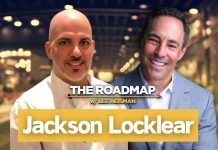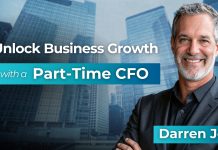Are you searching for that one thing that sets your small business apart from the competition? It often starts with branding. On today’s show, we welcome Sela Missirian, Vice President of Marketing and Business Development at Brown Bag Marketing, who discusses what you need to know about marketing, and how branding could take your small business to the next level.
Transcription:
Jim Fitzpatrick:
Hi, everyone, Jim Fitzpatrick. Thanks so much for joining us on the Atlanta Small Business Show. On today’s show, we welcome Sela Missirian, who is the Vice President of Marketing and Business Development at Brown Bag Marketing. Sela, thank you so much for joining us here on the show.
Sela Missirian:
Thank you, Jim, for having me.
Jim Fitzpatrick:
Sure. So everybody hears about branding, right? And I think the first thing that comes to mind when you talk to a small business owner about branding is like the Nike swoosh. We’ve got to have that. We’ve got to have… And oftentimes it’s really not about a logo. Is it?
Sela Missirian:
It’s really not about a logo. And it’s so much more about the story behind the brand. It’s about being distinct and helping your potential customer figure out how are you different and how are you better?
Jim Fitzpatrick:
That’s right. That’s right. So let’s start right there. What are some of the challenges that face small businesses as they sit down and try to map out (A) what their brand is and then how do they fulfill that promise and that brand to the consumer?
Sela Missirian:
Yeah, I think there can be a lot of challenges based on how they started. They may have had a fantastic product or service, but maybe never took time to really flesh out that value proposition. So for us and our team, we are really looking to partner with these small businesses to help define that. And so, as I mentioned, it sometimes can be just plotting out the landscape and seeing, okay, what are my customers thinking? What are my competition up to? What’s the climate of the market? And then figuring out how are you being helpful? What value are you offering? And so it goes beyond just the logo, the name of the product and the packaging. And it’s a little deeper than that. And if you are being helpful and offering value in a way that’s different and/or better than others, then you’ve got something strong to put a brand platform together.
Jim Fitzpatrick:
Right. And when should this be done? A lot of small business owners are tight on money and they don’t, they’ve got, they put together their rent for the next six months and maybe some attorney’s fees. And they know they have to hire an accountant. Of course they have inventory levels in some cases. But when you ask them, “What have you done in the way of mapping out what your brand strategy is going to look like?” Sometimes you get that deer in the headlights. Right? And they, and they’ll say, “Well, we don’t even really know yet. We haven’t had any customers.” Or maybe, “We haven’t been in business long enough to sit down and talk about a brand strategy.” That sounds so lofty to a lot of small business owners. But they should do that early on. Right?
Sela Missirian:
They should. And you’re right. It can sound really academic or it can sound too involved. And so they just don’t do it. And they maybe spend a little bit of money with a freelancer on a logo. Not that there’s anything wrong with that, but you bypass what is a really important fundamental as you go into market. And so what we like to do is demystify a lot of that process. So we get into a very interesting workshop scenario with our clients. And we look at who’s our ideal customer. You should have an idea for who that is. You should have a profile of what they’re like, and there might be multiples of those. And then you think about that intersection of what you can offer, what your competition can or can’t offer, what your customers are looking for.
Sela Missirian:
There’s a lot of insights out on the big worldwide web. So if you listen well in social media, if you look at some of the analytics and data that’s out there, you can probably start to carve out a green space for you guys to sort of establish that brand. And then from there it’s really nurturing. And so, it can be telling stories. It can be weaving that throughout your organization. It can be partnering with other folks and other businesses. So there’s a lot you can do once you’ve got that brand platform. But I think it’s one of the first things you should do.
Jim Fitzpatrick:
Yeah. I agree with you. I’ve opened up a number of businesses and in some cases learned that lesson the hard way by not sitting down and doing that in advance. But on the times that I’ve opened up a business and said, “Okay, here’s who we are. This is what we stand for. This is not what we stand for. We’re not going to go after this type of customer because it’s not the right fit for us.” But it really is setting up what your values are, as a company, to say “These are our core beliefs,” And taking it a step further to make sure that your employees feel the same way. And they know what the core beliefs of the company are. It’s not good enough just so that the president or the vice-president, or the two partners know. It’s got to be something that that company lives and breathes every day. Right?
Sela Missirian:
Yeah. I love that you brought up values. It’s interesting because we’re reading a lot about brand purpose and it’s actually the number one driver for a millennial or Gen Z buyer. And so depending on who you’re also selling to, if you don’t say what you stand for or what solution that you’re crafting, then you’re really missing a huge opportunity there.
Jim Fitzpatrick:
Yeah. For sure. To your point, those millennials and Gen Z, they want to know. They want to know where’s my money going. What do you believe in? And then having taken a step further with the consumer, if they align themselves with what your values are, you’re going to get even that much more of a raving fan out there. Right?
Sela Missirian:
Yeah. It’s a beautiful moment. We love when that happens. And we see it on social media in particular, because you’ve then created a brand advocate. And so, again, these terms are sort of buzzwords in our industry. But it means a lot when somebody talks about you elsewhere and promotes you. Word of mouth, especially for small business, is golden. And so a lot of what we’re trying to do is, again, craft the value proposition, explain what your brand stands for. What are your values? How have you done that? Maybe how are you distinctive? Some success stories, share a little bit about the… Small business owners are passionate. They started it for a reason. Share that story and expose yourself a little bit there. And I think you’ll see huge returns.
Jim Fitzpatrick:
Yeah. There’s no question. We see companies right now, small and large… But we’ll keep this specific to the small business owners that are out there… That have really reached out and done a lot for their community during this pandemic over the course of the last year. I guess it started just about a year ago, this week in the middle of March. And that means a lot to consumers. Right? There’s been some companies that haven’t put that on their social media or their websites and said, “Well, that’s not something we want to brag about.” But at the end of the day, they should post it and they should get it out there. Right? To your point, you want to create that alignment with your potential consumer out there to say, “Look at your beliefs and your core values are the same as ours, and we are giving back to the community. So if that’s something you like, you might be a good fit to be one of our customers.”
Sela Missirian:
Yeah. I think there’s a lot of benevolence. I think that people need to know that you are part of the community. That you have a heart. When I read stories particularly about restaurants in my neighborhoods, I want to help them. Right. And so I think depending on whether you’re consumer oriented or B2B brand, that can look differently. But giving back and being a part of the community is also something that helps draw your employees into that story. And so many times we see brands that just stop at the surface level. But when you can include your organization and you can show how employees have extended that throughout, then they start to share that with their social networks and you get an exponential effect. And now you really are established in the community. And there’s nothing better than that.
Jim Fitzpatrick:
Yeah. There’s no question about it. And so what advice would you give to those Atlanta companies considering going into their own business for the first time right now? I mean, what do you tell those clients early on? What are the steps they should take?
Sela Missirian:
So, we hear from so many small businesses that we talk to, and really many businesses that we talk to of different sizes. There’s always three things that really come up. It’s helping to identify the value proposition. Getting some leads. You want to get some sales. And figuring out what is that digital experience going to be like when people connect to us. So I really look at it through those three things. So when you’re starting out, have your story, have your brand platform set. Figure out where are you going to get leads from? What is your sales model? And then what is that digital experience?
Sela Missirian:
And I think that that’s so key to scaling your business because we’ve been stuck in our homes for the last year. We’ve been working from home. Behaviors, have changed. People are streaming all the time. We’re working out from our homes. We’re watching cooking channels that we might not have watched before. There are some amazing statistics about e-commerce adoption. Right? It accelerated 10 years in three months last year. So think about that. So now all of a sudden behaviors have changed. So if you’re starting a small business today, you have to think about that. This is a different climate. And so you might want to interact and anticipate that those interactions are going to be different. So once you start your brand and you figure out how you’re going to sell and what that transaction is, you have to have a welcoming digital environment for these people in a way that they’re used to experiencing with other areas.
Jim Fitzpatrick:
That’s right. That’s right. So tell us a little bit about your company, Brown Bag. How long have you been around and what is the perfect client for you?
Sela Missirian:
Gosh, so we love working with lots of different clients. The perfect client would be one that has an interesting marketing problem that we can sink in together as partners and figure out. We’ve been around for 19 years. And so we have a lot of best practices accrued. We’ve got a great, talented team. We are, as you would imagine, very focused on digital, but we have a traditional background. And we started in 2002. Focused heavily on B2B and B2C. So I would say that Brown Bag is a very versatile agency. I think it’s good for clients that need a partner to figure it out together. I think it’s good for businesses that don’t have marketing departments and they just want to outsource everything to a team.
Sela Missirian:
And I think it’s great for a larger agency or larger companies that need one or two things done really well. So just an example, we started working with AT&T on the business side years ago. They weren’t really known for the big media spends that the consumer side was, but they needed to dip their toe in the water. And so we helped figure out social media together with them. Did a corporate blog. Figured out what does it mean to share your opinions online, thought leadership? And so it’s fun when you can create a solution with your client.
Jim Fitzpatrick:
Sure. Now people that just heard that, small business owners who heard you say AT&T, and they went, “Whoop, Brown Bag’s not for me.” So tell us. If somebody is out there and they’re thinking about starting a small business, are you small enough to take, or at least looking to take on small business owners early on, and then until they grow to the size of atnAT&T?
Sela Missirian:
We are, and we have great tenure with our clients. They’ve stuck around for years. We work with clients that have a team of three, and we become their marketing department. We just helped a med tech company here locally, totally rebrand, relaunch. They don’t have a marketing department. So again, when you think about all the things that you have to do in terms of website and social media profiles, and considering that people are connecting to… Over half of people now connect to your brand with their mobile phone. Right. It’s replaced the desktop. So it’s hard to staff for that internally. And so we’ve got the teams that can do that for small businesses.
Jim Fitzpatrick:
Sure. Do you consider yourself an ad agency or a PR firm or branding company? Is it all kind of in one? Or do you stay away from certain areas?
Sela Missirian:
So that’s an interesting question in our field. There are some designations, but we are a marketing agency because ultimately we’re trying to help you go to market. And so for some people, that’s heavily focused around an ad campaign. And we’re really looking to get your brand out there. Generate awareness. And for others, it’s very simple, generating leads. And so we might be helping you with a Facebook targeted campaign in your community or in your neighborhood. And then for others, it’s really how do you come up to speed with digital? It’s so rapidly changing and how do you keep up? And that’s where it’s helpful to go to an agency that has designers and developers sitting side by side, and they can create that.
Jim Fitzpatrick:
All right. So no company too big and no company too small to call Brown Bag. Right?
Sela Missirian:
Yeah. It’s funny. I mean, we referenced the small med tech company. And then on the large side, you have the AT&Ts. But I would say we have a sweet spot probably with small businesses. And especially in the Metro Atlanta area, there’s so much great growth still on the business side. It’s nice to work with a company that has an established reputation. And so you know when you work with our team, you’re going to get solid people.
Jim Fitzpatrick:
Absolutely. We’ve heard nothing but great things about you. That’s why we reached out to you. So thank you so much for joining us here on the show today. Sela Missirian, VP of marketing and Business Development at Brown Bag Marketing. Thank you so much. For those people that are watching us today having this conversation, it might be the marketing solution that you’re looking for. Check them out online as we did. And I think you’ll like what you see. So thank you so much, Sela. Really appreciate it.
Sela Missirian:
Thank you, Jim. Thanks for having me.
Jim Fitzpatrick:
Thanks.
The Atlanta Small Business Network, from start-up to success, we are your go-to resource for small business news, expert advice, information, and event coverage.
While you’re here, don’t forget to subscribe to our email newsletter for all the latest business news know-how from Atlanta Small Business Network.







